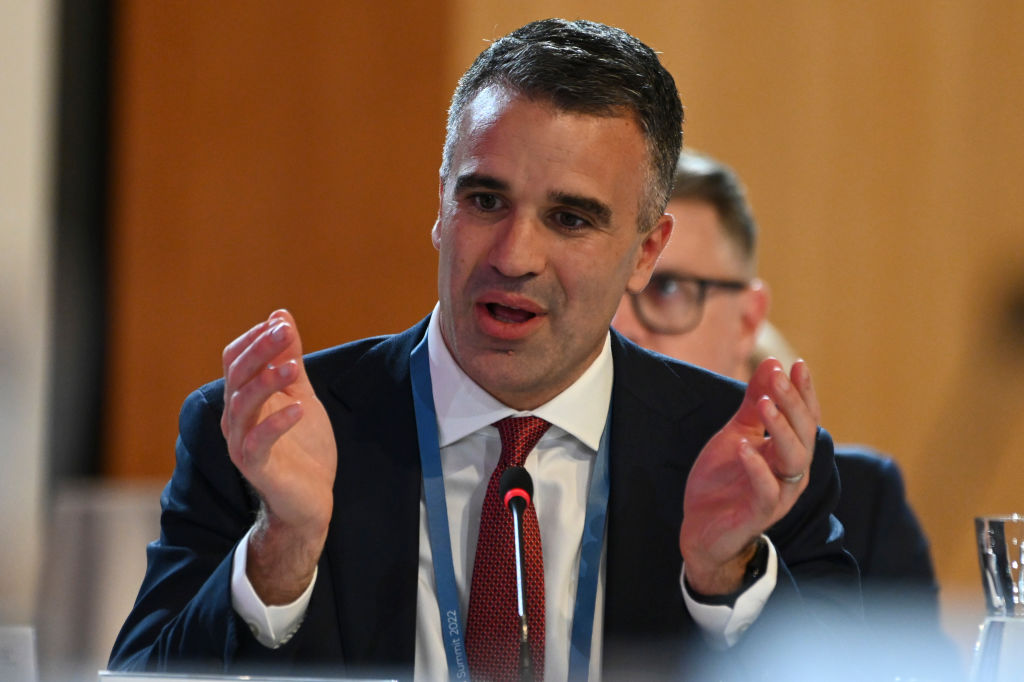The government is under pressure to reel in Australia’s growing debt burden.
Australian Treasurer Jim Chalmers has said that there will not be significant spending cuts in the upcoming federal budget.
“This is not the time for scorched earth austerity. This is not the time to slash and burn in the budget when people are doing it tough and when growth in our economy is weaker than we would like it to be,” he said on May 6.
“Some extra spending is unavoidable. Some of it is automatic. Some of it is desirable. All of it is warranted.”
Nevertheless, the treasurer said there would be “spending restraint” and savings in the budget.
“There’s no shortage of opinions at this time of year about the budget position. We see that in the papers almost every day. And we welcome that because it helps us to chart a responsible middle course between those who want us to slash and burn in the budget, and those who think that it should be some kind of free-for-all of spending,” he said.
“We are charting a responsible middle path. We are striking the right balance in the budget that we will hand down in eight day’s time.”
At the same time, Mr. Chalmers talked about the possibility of having a second surplus following the $22 billion (US$14.5 billion) surplus in 2022.
“The second [surplus] is in reach, and if we achieve it, this would be the first back-to-back surplus in almost two decades,” he said.
However, the treasurer said that some deficits in the upcoming budget would be larger than previous forecasts.
“Some of the deficits will be a little bigger. Some of them will be a little better,” he added.
“And you will see that on the night, but overwhelmingly, what you will get is a sense of the really quite substantial progress that we have made.”
Mr. Chalmers’ statement comes as a research paper indicates that total government debt will likely hit $1.4 trillion in the 2023-2024 financial year, before reaching $1.75 trillion by 2027.
The treasurer has openly admitted that interest payments on Australia’s loans are one of the fastest growing line items on the country’s budget. Further, programs like the National Disability Insurance Scheme (NDIS) have also proven difficult to rein in.
The paper called on state and federal governments to cut back on spending to ease the burden for future generations.
Finance Minister Says It’s Harder to Find Savings in Budget
Yet Finance Minister Katy Gallagher said it was getting harder to find savings in the May 2024 budget.
“In relation to savings, you will see savings in this budget. They are getting harder to find. Don’t pretend otherwise,” she said.
Ms. Gallagher gave the example of the $1 billion savings resulting from the reduction of the use of external labour consultants and contractors.
“You'll see an extension of that saving in this budget but also an additional saving through the 2024-25 [financial] year and across those years because we believe that whilst we’re making investments in the public service, we’re restoring the balance and reducing the reliance on external labour,” she said.
In addition, the finance minister explained why there was “unavoidable” spending in the budget.
“This is necessary spending, but it builds upon the spending that we’ve had to do cleaning up the mess of our predecessors around terminating programs, funding cliffs, permanent programmes that had no ongoing funding built into the budget,” she said.
Ms. Gallagher added that some spending went toward sustaining essential services such as MyGov and healthcare programs.
 Australian Finance and Women Minister Katy Gallagher holds a press conference at Parliament House in Canberra, Australia, on May 9, 2023. (Martin Ollman/Getty Images)
Australian Finance and Women Minister Katy Gallagher holds a press conference at Parliament House in Canberra, Australia, on May 9, 2023. (Martin Ollman/Getty Images)More Cost of Living Help
Mr. Chalmers said the government would focus on providing cost-of-living relief to Australians primarily through the tax system and other areas to reduce inflationary pressures.
“We do more than acknowledge that we have been rolling out substantial cost of living help. There will be more in the budget,” he said.
“The centrepiece of that cost of living help will be a tax cut for every Australian taxpayer.”
Mr. Chalmers referred to the revised stage three tax cut, which would take effect from July 1, and claimed that 84 percent of the taxpayers would receive a bigger tax cut than the old arrangement under the former Coalition government.
Nevertheless, the treasurer acknowledged that cost of living pressure would not go away anytime soon.
“I think these cost of living pressures are acute. They are still substantial,” he said.
Opposition’s Response
Following the press conference, Shadow Treasurer Angus Taylor blamed the Labor government for Australia’s high inflation situation.
“Australians are paying the price for Labor’s economic mismanagement,” he said.
“Today’s announcement is a glaring admission from Labor that real wages have been going backwards under their government.
“The policy announced will provide marginal relief to Australians struggling to pay down their debts with the rising cost of living.”
Pointing to the significant rise in student debts due to indexation, Mr. Taylor said it was the result of Labor’s homegrown inflation.
“The best way to address growing HECS (Higher Education Contribution Scheme) debts is to fight Labor’s homegrown inflation at its source by reining in spending and strong budget management,” he said.
“Instead, Labor has let spending and inflation run out of control to the point that inflation is now stubborn, sticky, and homegrown.”
Mr. Taylor’s remarks come just a day after the Labor government announced that it would wipe around $3 billion worth of debt for students around the country.














 English (US) ·
English (US) ·  Turkish (TR) ·
Turkish (TR) ·